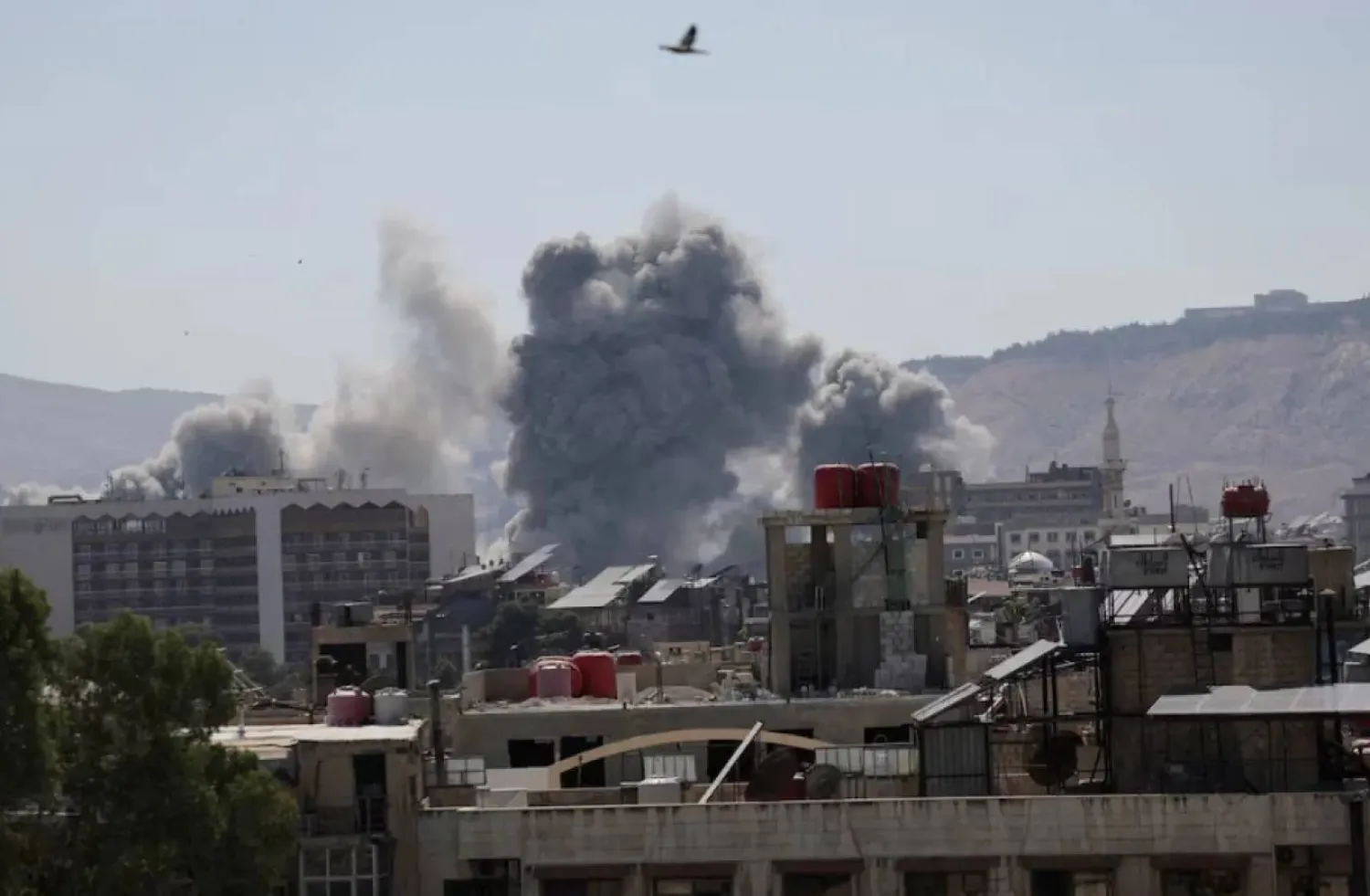The Syrian Observatory for Human Rights (SOHR) has revealed in its report that Israel carried out 29 strikes on Syria in 2021 since the beginning of the year.
SOHR documented eight aerial and rocket attacks in 2021, during which Israel targeted several positions in Syria, destroying nearly 29 targets, including buildings, warehouses, headquarters, centers, and vehicles.
These strikes killed 76 people and they were as follows: 21 regime soldiers and Syrian militiamen loyal to Iran and the Syrian regime, 22 Iraqi militiamen, 14 militiamen of the Afghani “Liwa Fatemiyoun”, five militiamen of the Pakistani “Liwa Zainebiyoun”, and ten pro-Iran non-Syrian militiamen.
The targeted provinces were as follows: Damascus and Rif Dimashq: five strikes, Deir Ezzor: one strike, Al-Quneitra: one strike, Hama: one strike, and Al-Suwaidaa: one strike.
Israel initiated its 2021 attacks on January 6, when it targeted the radar system battalion in the west of Al-Dour village in Al-Suwaidaa countryside, “Najran” battalion in the north-west of Al-Suwaidaa at the administrative border with Daraa governorate, and the surrounding areas of the 1st Division in al-Keswa area and other sites on Damascus-Daraa highway.
The targeted areas were hosting militias loyal to Iranian forces and Lebanese Hezbollah, as well as regime forces and loyalists.
The attack left three people dead, two of them in al-Kiswa area and the other in the radar system battalion in Al-Suwaidaa, while more than 11 people were injured, some seriously. A radar system was also destroyed in the west of Al-Suwaidaa, in addition to a weapons depot, south of the capital, Damascus.
The second attack took place on January 16 and left the largest death toll ever, as 57 people were killed after positions, weapons and ammunition warehouses, and missile depots affiliated to regime forces, the Lebanese Hezbollah, Iranian forces, and their proxies came under attack in the area between Deir Ezzor city to Al-Bokamal desert on the Syria-Iraq border.
In Deir Ezzor city, 26 persons were killed in ten strikes by Israeli fighter jets on Ayyash warehouses, Saka camp, the 137th Brigade, the mountain overlooking Deir Ezzor city, and other positions on the outskirts of the city, and they were as follows: ten regime soldiers, four members of the “military security” and 12 Iranian-backed militiamen.
However, it is not known yet if the fatalities have included members of the Iranian Revolutionary Guard Corps and the Lebanese Hezbollah or not. The Israeli strikes on Deir Ezzor city have destroyed weapons and missile warehouses and headquarters.
While in Al-Bokamal, 16 Iranian-backed Iraqi militiamen were killed in six Israeli airstrikes on positions, weapons warehouses, and ammunition depots in the area of “Al-Hezam”, Al-Jamiyat neighborhood and other positions in Al-Bokamal desert. Several centers and vehicles were destroyed.
In Al-Mayadeen, however, 15 Iranian-backed non-Syrian militiamen, including 11 Afghani members of “Fatemiyoun Brigade”, were killed in Israeli strikes on positions and weapons warehouses in Al-Mazari area in Al-Mayadeen desert in the eastern countryside of Dear Ezzor.
The attack also destroyed weapons warehouses and headquarters.
The third attack was on January 22 when Israeli fighter jets flying over Lebanon struck at least five positions of Iranian-backed militias and the Lebanese Hezbollah nearby Hama city and Syria’s middle sector.
While on February 15, Israeli rockets hit headquarters of the 4th Division in the mountains surrounding Damascus-Beirut highway, known as “Beirut old highway”, where weapons and missiles’ depots belonging to the Iranians and loyal militias were located.
The sixth attack targeted positions of the Iranian Revolutionary Guard and the Lebanese Hezbollah, on February 28, in the south of the capital, Damascus.
The seventh attack occurred on March 16 when Israel airstrikes targeted two weapons warehouses of Iranian forces in regime military positions, a few kilometers away from Damascus international airport.
The latest Israeli attack on Syria was on April 8, as Israeli missiles managed to destroy a weapons and ammunition warehouse believed to be used by militias affiliated to the Lebanese Hezbollah in a military post near Al-Demas area.
This attack also left three militiamen dead, but it is not known if they were Lebanese or foreigners affiliated with Iranian-backed militias.









